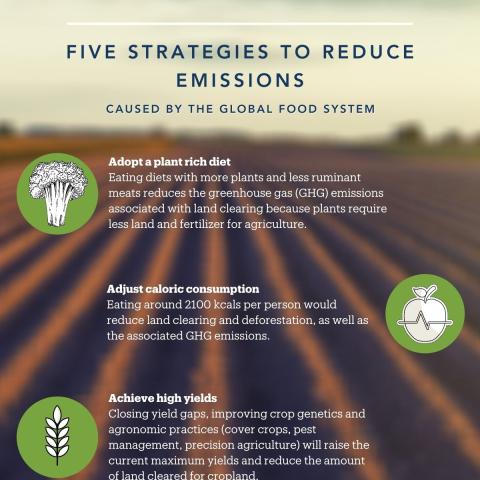
Fossil fuel burning accounts for the majority of global greenhouse gas emissions, and to the world’s credit, several countries are working to reduce their use and the heat-trapping emissions that ensue. The goal is to keep global temperatures under a 1.5° to 2°C increase above preindustrial levels — the upper limits of the Paris Climate Agreement.
If we stopped burning all fossil fuels this minute, would that be enough to keep a lid on global warming?
According to Bren School Distinguished Professor David Tilman, petroleum energy sources are only part of the picture. In a paper published in the journal Science, Tilman and colleagues predict that even in the absence of fossil fuels, cumulative greenhouse gas emissions could still cause global temperatures to exceed climate change targets in just a few decades.
The source? Our food system.
“Global food demand and the greenhouse gases associated with it are on a trajectory to push the world past the one-and-a-half degree goal, and make it hard to stay under the two degree limit,” said Tilman, who holds a dual appointment at UCSB’s Bren School of Environmental Science & Management and at the University of Minnesota. The world’s growing population as well as its diet are driving food production practices that generate and release massive and increasing amounts of carbon dioxide, methane and other greenhouse gases into the atmosphere. According to the paper, left unchecked, agricultural emissions alone could exceed the 1.5°C limit by about 2050.

Further reading
Keeping Our Cool, The UCSB Current
Global food system emissions could preclude achieving the 1.5° and 2°C climate change targets, Science, Vol. 370, Issue 6517, 06 Nov 2020



